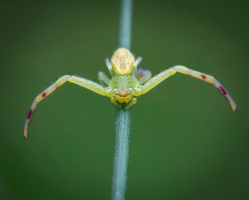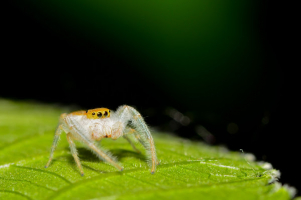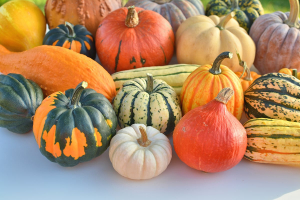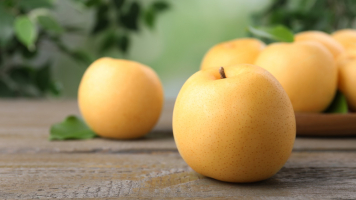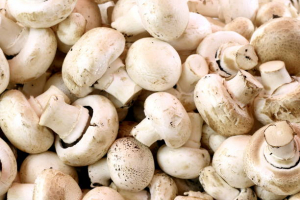Top 10 Most Common Types of Spiders in Illinois
People always think of the “windy” streets of Chicago, sports, or deep-dish pizza when they think about Illinois. Along with those things, the state is also ... read more...known as home to numerous species of animals, both large and tiny, including badgers, bison and beautiful spiders. Jumping spiders, orb weavers, and black widows are just a few of the numerous spider species that may be found in Illinois. Here is a list of most common types of spiders in Illinois, let's find out!
-
The Forest Wolf Spider (Hogna frondicola), is a member of the wolf spider family Lycosidae. These spiders are common across the rest of the United States and Canada, including Illinois. The leg span of a forest wolf spider is approximately 50 millimeters, with females typically being larger than males. They share the same long legs with other members of their family, which are ideally suited for running. Their carapaces have a characteristic, broad grey stripe running down the middle of them. Their legs and abdomens appear light grey, whereas the remainder of their carapaces appears dark grey.
Forest wolf spiders catch victims without the use of webs thanks to their sharp vision and agility. They normally spend the day hiding down in their underground tunnels and hunting at night. Due to their large size, they can deliver a painful bite, but their bite is not medically significant.
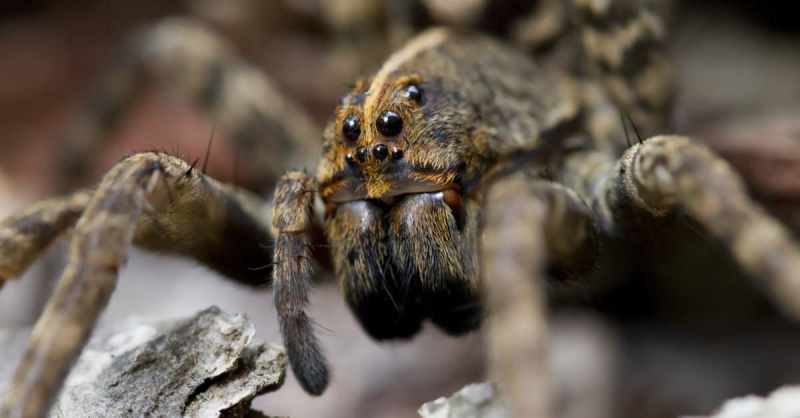
Will E. Davis/Shutterstock.com 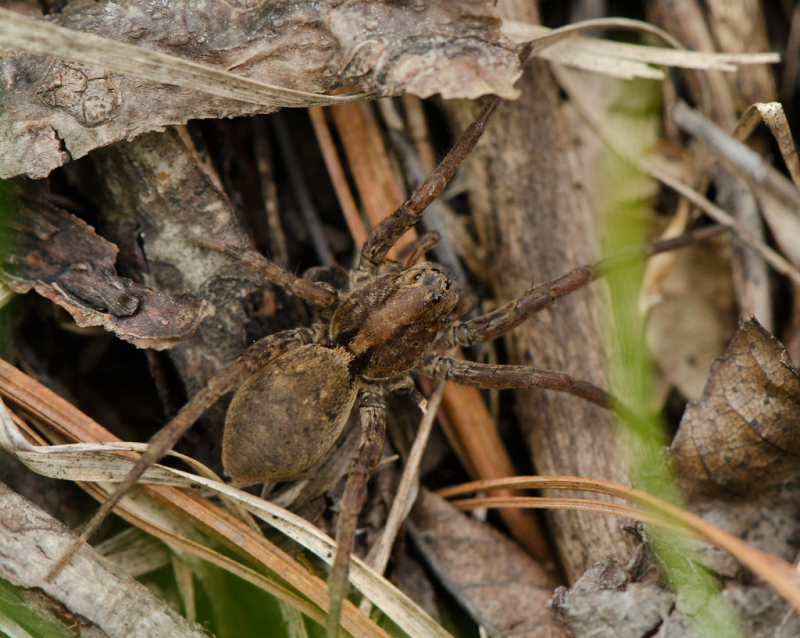
Spider Identifications -
Also known as the White-Banded Crab Spider, the Ridge-Faced Flower Spider belongs to the crab spider family Thomisidae. The most likely place to find one of these spiders in Illinois is resting on a flower's leaves or petals. Male and female ridge-faced flower spiders are roughly 2-3 millimeters long, with females often measuring 5 to 11 millimeters. They often have yellowish-green carapaces with purplish-brown sides and a yellow mid band. Their abdomens are often all bright yellow, although they occasionally have a purplish-brown, V-shaped pattern. The little white or yellow ridge beneath their eyes is where they receive their name.
The color of ridge-faced flower spiders can be altered to blend in with their surroundings. This makes it easier for them to hunt because they can catch animals without using webs by simply waiting and waiting. Their diminutive size prevents their bite from typically being able to penetrate human skin.
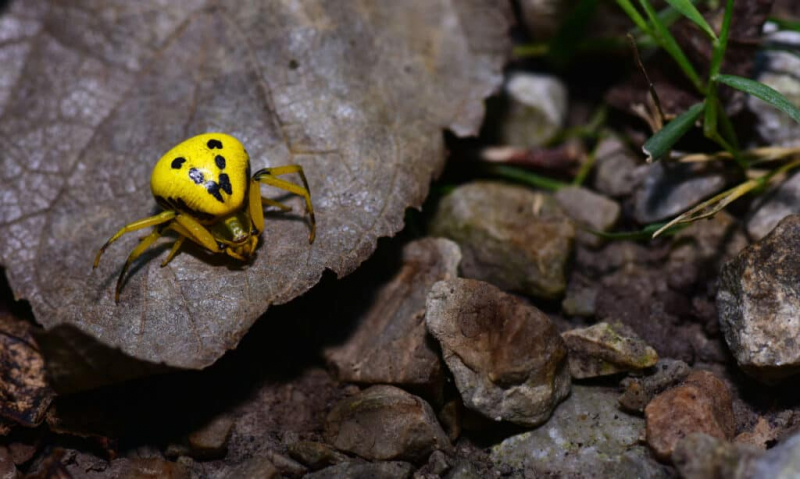
iStock.com/Shoemcfly 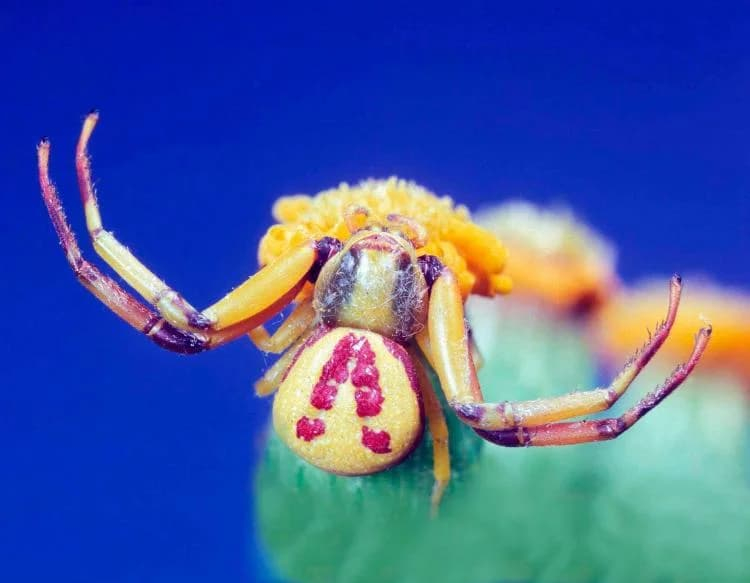
MDC Teacher Portal -
The Orchard Spider is a member of the long-jawed orb weaver family Tetragnathidae. These spiders are widespread throughout the eastern United States, including Illinois. Male orchard spiders are typically shorter than females, measuring between 3.5 and 7.5 millimeters in length. Their sides and legs are a striking shade of leaf green. Their tops are silver with black and brown stripes, while the undersides have black and yellow spots. Near the back of their abdomens, they also have brilliant yellow, orange, or red spots.
Orchard spiders frequently dangle from their horizontally arranged webs facing downward. As their name suggests, they frequently construct their webs in woody settings, including artificial ones like orchards. They feed on a variety of garden pests, and humans are not threatened by their bite. As a result, many people consider them beneficial and like to keep them around.
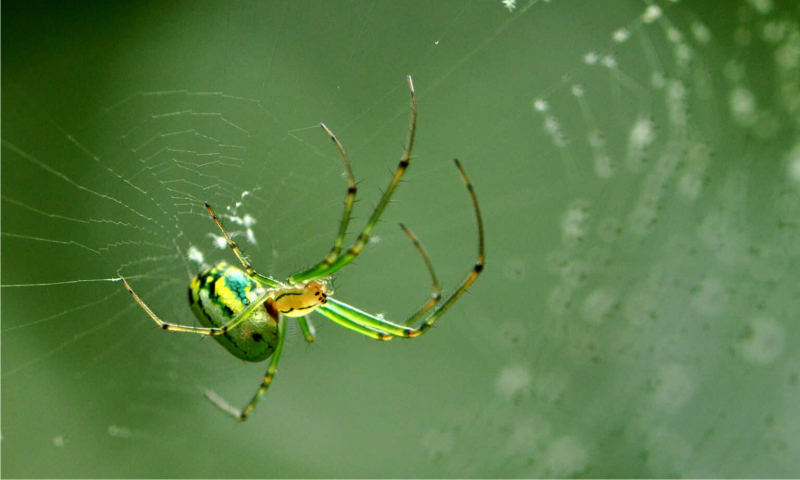
Shelly Jefferson Morton/Shutterstock.com 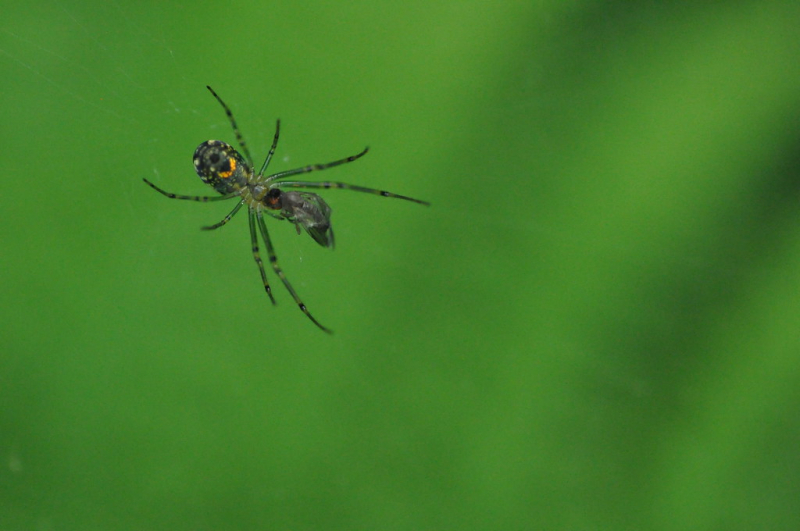
Flickr -
Theridiidae, which is the family of cobweb spiders, includes the Northern Black Widow (Latrodectus variolus). In addition to being widely dispersed throughout the eastern and northern United States as well as southern Canada, it is one of the most venomous spiders in Illinois. Male northern black widows are 4 to 5 millimeters long, while females are between 9 and 11 millimeters long. They resemble typical black widows in appearance, with the exception of a red hourglass-shaped mark on their abdomens. The hourglass is rarely whole, though, which makes this black widow distinct from other black widows.
The venom that can cause latrodectism is carried by northern black widows. When bitten, people frequently experience pain, perspiration, nausea, and stiffness in their muscles. Their bite can occasionally be lethal. That said, most people that die from northern black widow bites are either very young or severely immunocompromised.
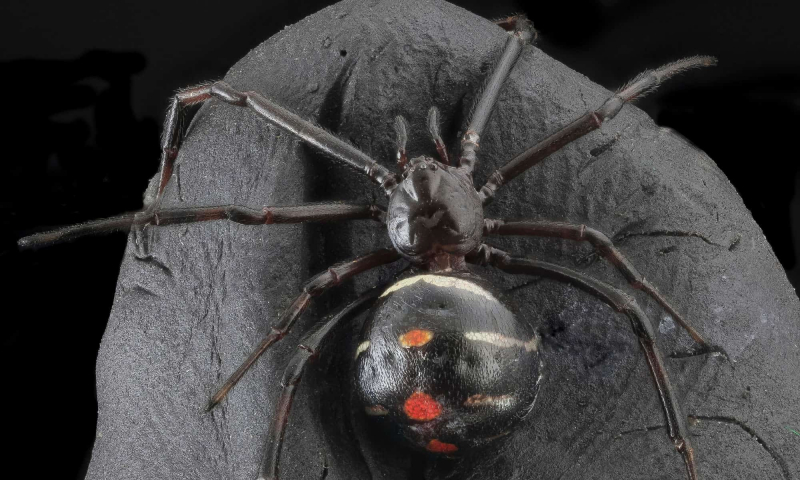
Porco_Rosso/Shutterstock.com 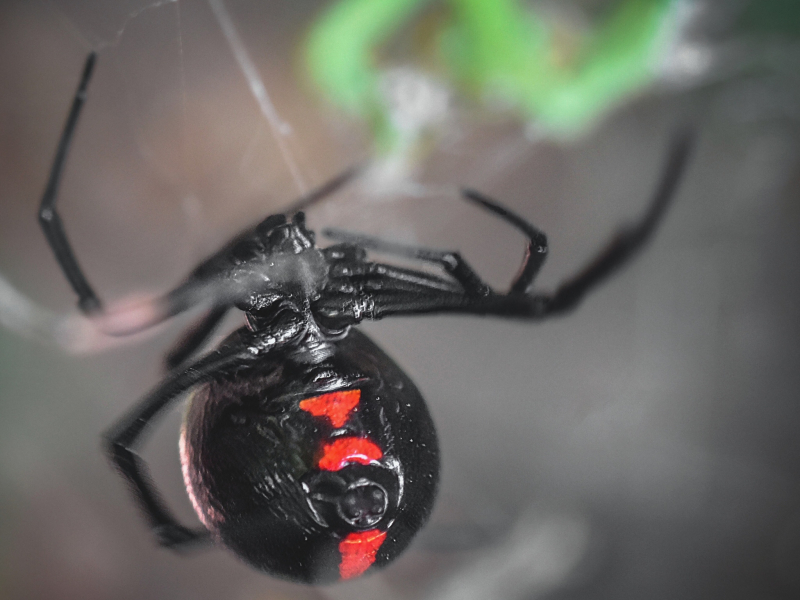
iNaturalist Canada -
The Tan Jumping Spider (Platycryptus undatus), is one of several species of jumping spiders in Illinois. It extends from Canada in the north to Texas in the south, and from the center of the United States to the east coast. Tan jumping spiders have a female length of 10 to 13 millimeters and a male length of 8.5 to 9.5 millimeters. Their abdomens have a peculiar pattern with a succession of V-shaped marks going from front to back. While the remainder of their bodies is grey with black mottling, these markings appear light grey or beige.
Tan jumping spiders don't make webs to ensnare their prey. Instead, they engage in active hunting, stalking, and capturing their prey with their sharp eyesight and swift jumping skills. Although they are normally not aggressive, they might bite if threatened or cornered. That said, their bite is not considered medically significant.
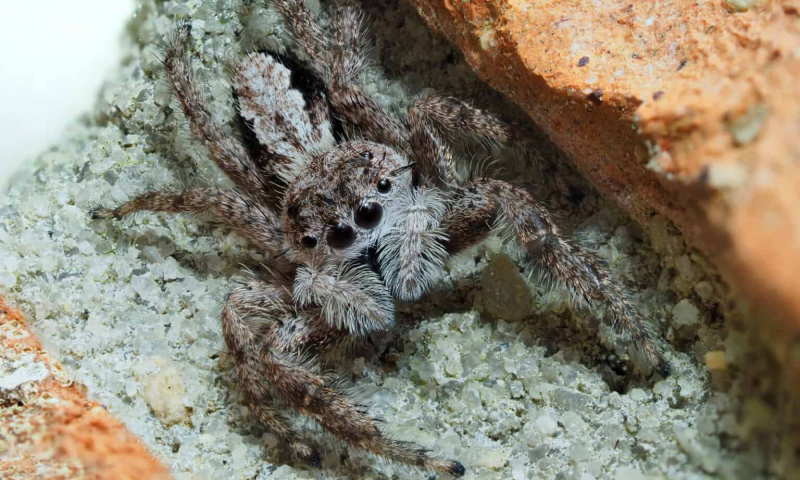
iStock.com/sdbower 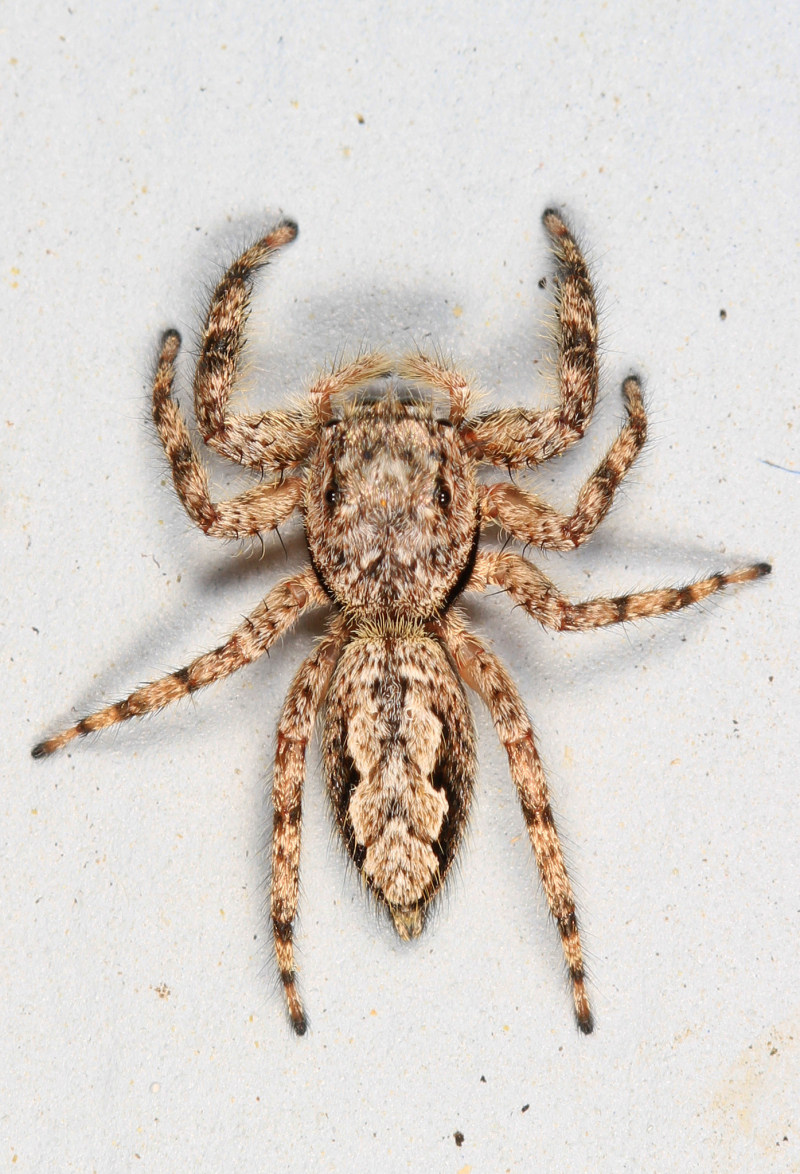
iNaturalist -
Also known as the pillbug hunter, or sowbug killer, the Woodlouse Spider is an arthropod with many names. It is an international species that may be found all over the world and is a member of the Dysderidae family. Male and female woodlouse spiders are around the same size, measuring 9 to 10 millimeters and 11 to 15 millimeters, respectively. Instead of having eight eyes, they have six, and their mouthparts, known as chelicerae, are disproportionately enormous. Their abdomens are yellowish-brown or grey, while their legs and bodies are orangish-red.
If you're looking for these spiders in Illinois, you'll probably find them hiding under bricks, logs, or anywhere else where woodlice are common. Although they occasionally hunt on centipedes and other spiders, as their name suggests, their main diet consists mostly of woodlice. Although their bite can be fairly painful due to their strength, people are not in danger from them.
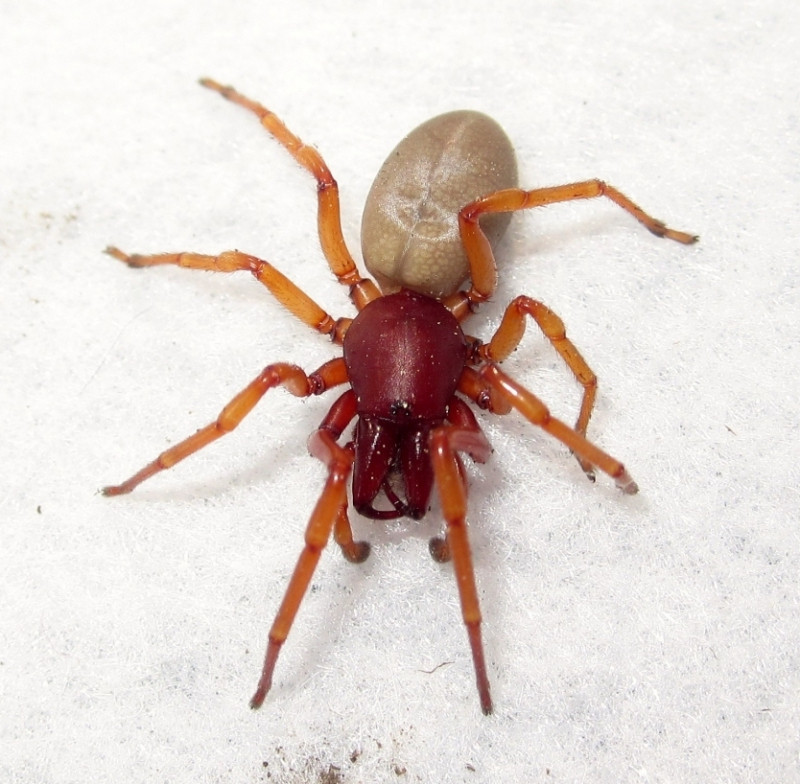
iNaturalist 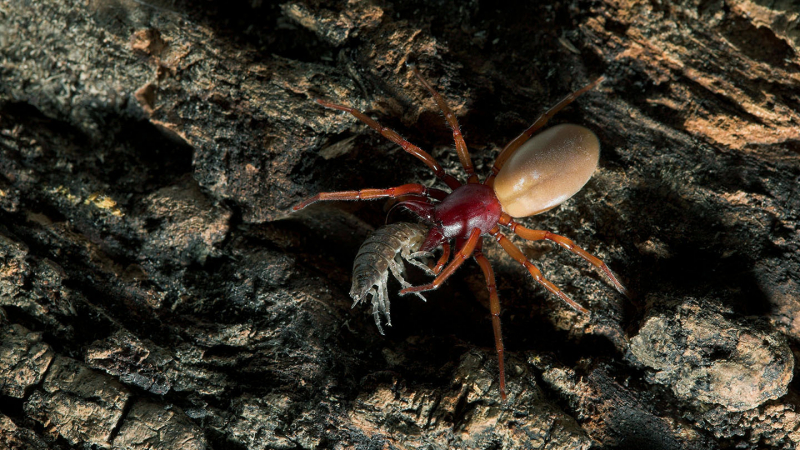
Woodland Trust -
The White-Banded Fishing Spider (Dolomedes albineus), belongs to the nursery web spider family Pisauridae. These spiders are most frequently observed in Illinois close to streams, ponds, or other bodies of water. White-banded fishing spider females can grow to a maximum length of 23 millimeters. Males, meanwhile, have a maximum growth size of 18 millimeters. They come in a range of colors, although the majority of specimens have black patterns and seem brown or mossy green. The white band that runs over the area behind their eyes, around their jaws, and occasionally even around their entire carapace is where they get their name.
Along with insects, white-banded fishing spiders also hunt for tiny vertebrates. They have the ability to run over the water's surface and dive beneath it to grab small fish and tadpoles. Despite their size, their bite is not thought to be very dangerous.
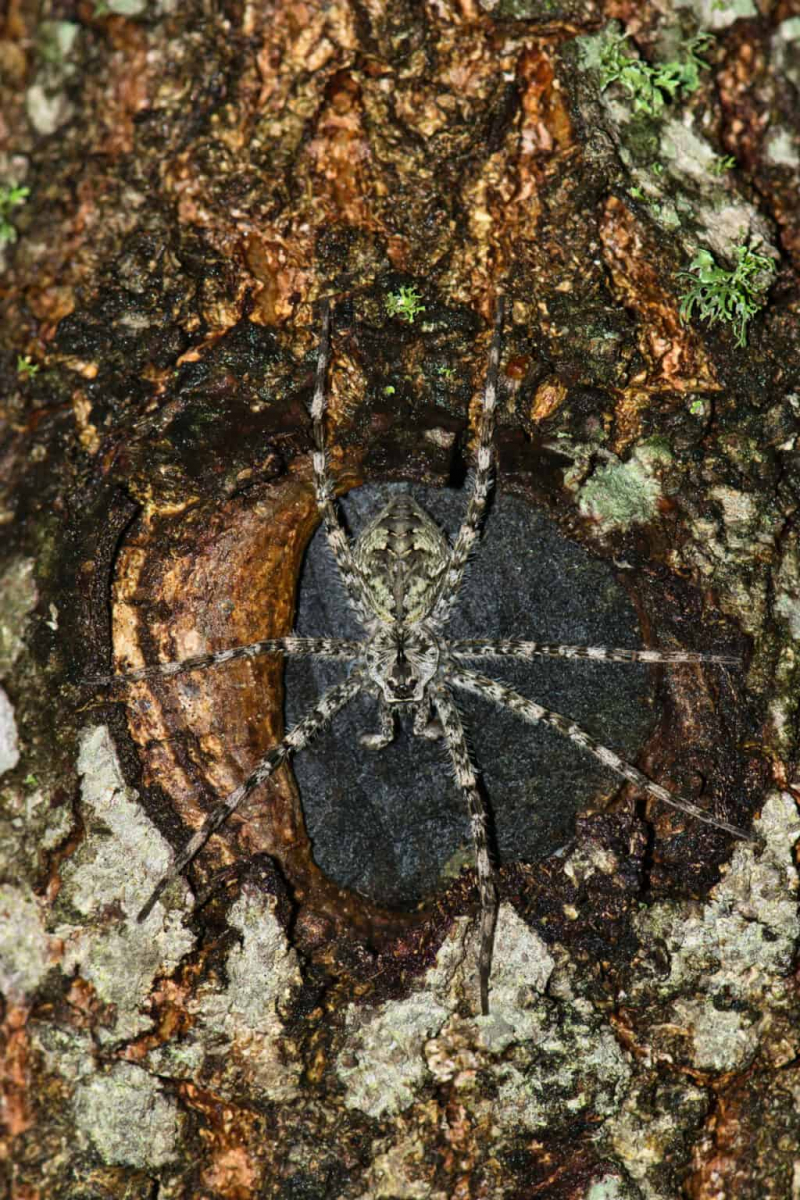
iStock.com/Brett_Hondow 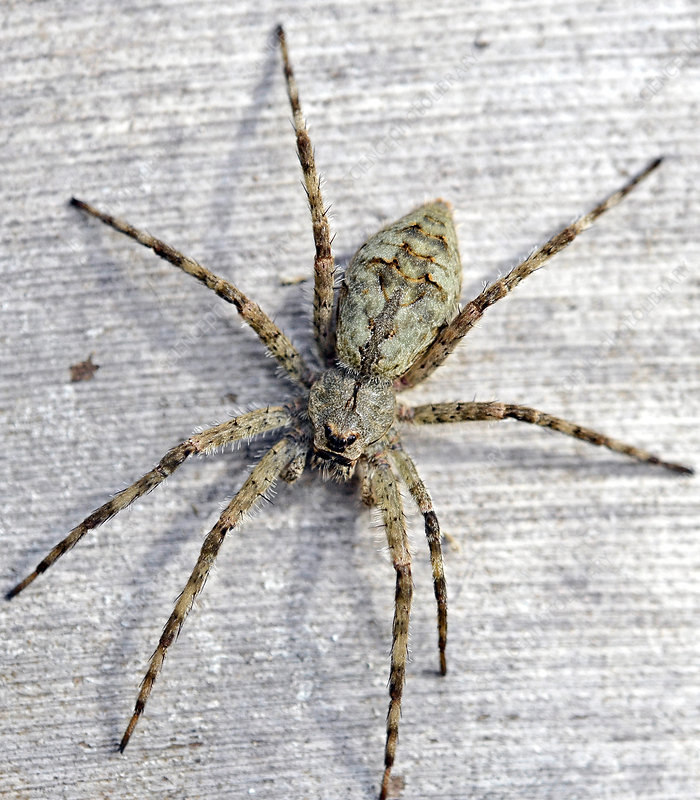
Spider Identifications -
The Marbled Orb Weaver (Araneus marmoreus), is one of the most visually striking spiders in Illinois. It can be found all over North America, but it prefers to make its webs in wooded areas. Male marbled orb weavers are only approximately half as long as females, measuring about 9 millimeters in length. Because of how much their huge, orange abdomens resemble a pumpkin, they are sometimes known as pumpkin spiders. Though some have pale yellow abdomens with a dark spot near the back, the majority of them have orange abdomens with black or brown marbling.
Marbled orb weavers build vertically-oriented webs with a silk retreat in the corner where they hide during the day. Although they are quite large, they are not known to be aggressive, and their bite poses no danger to humans.
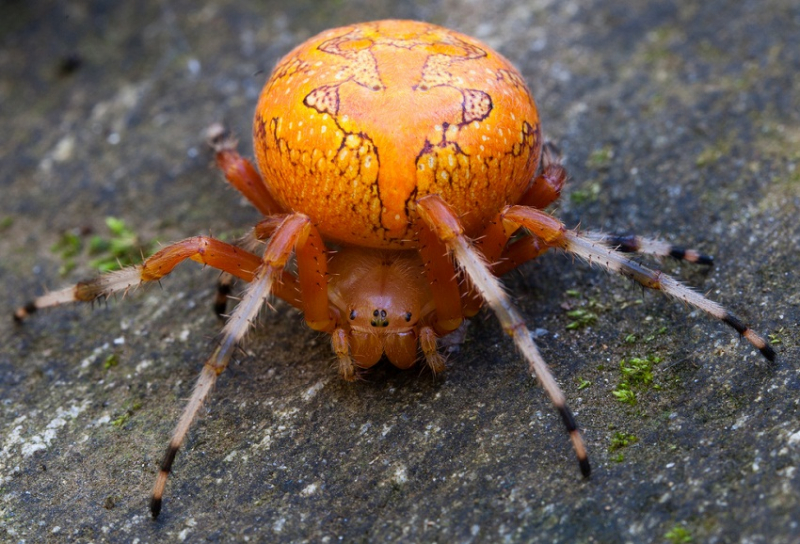
Spider Identifications 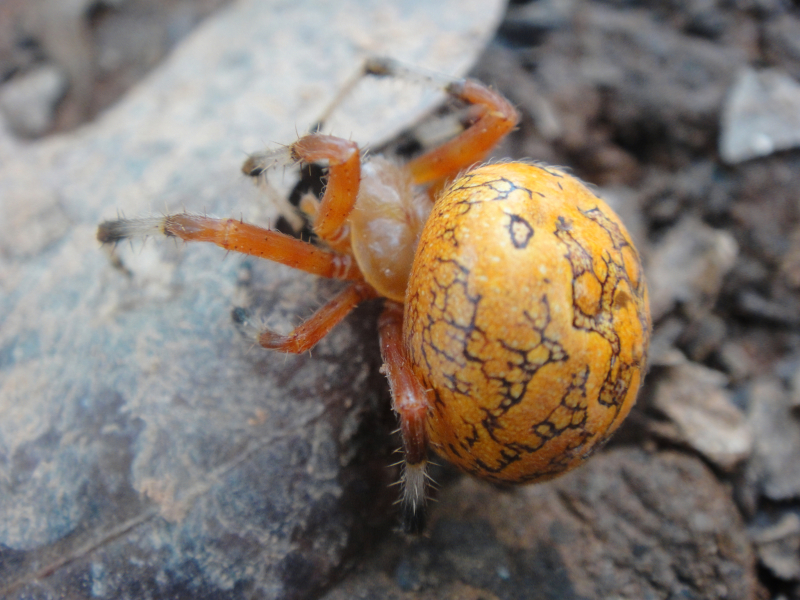
Lucky Sci -
The Black Lace-Weaver (Amaurobius ferox), is a nocturnal spider in the family Amaurobiidae. Although it was formerly only found in Europe, it is now also common in Illinois, all of North America, and New Zealand. It usually grows in damp, dark places like basements or under rocks or logs. Male black lace weavers are 8 to 10 millimeters long, compared to the 11 to 16 millimeters that the females are. Their bodies have a primarily black appearance, although they can also have dark red or brown areas. They have spherical abdomens with pale yellow patterns that occasionally resemble a skull.
The lace-like webs give black lace weavers their name. Their webs are comprised of incredibly sticky, thin, woolly silk that is excellent for catching creatures. They have been known to bite people, the effects of which are equatable to a mild wasp sting.

Wikipedia 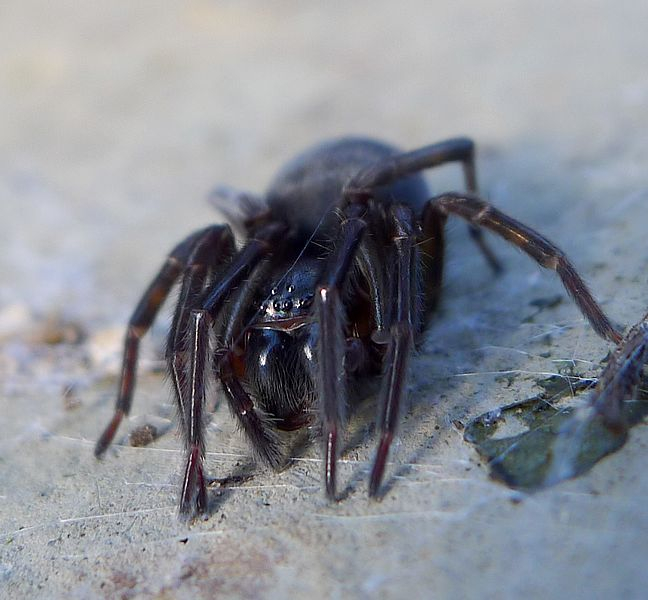
Wikimedia Commons -
The Eastern Parson Spider (Herpyllus ecclesiasticus), is a member of the ground spider family Gnaphosidae. It is found throughout the eastern half of North America, as its name suggests. The majority of specimens are between 10 and 20 millimeters long, with males being smaller than females in length. They have fine hairs all over them and primarily have a black or dark grey appearance. A white stripe on their abdomens mimics a cravat, a style of necktie worn by clergymen known as parsons in the 18th century.
Eastern parson spiders don't hunt for victims in webs. They can run exceedingly swiftly in pursuit of insects and love to ambush their victim. Although their bite is not lethal, it is known to be quite painful. Since they often prey on household pests, most people consider them beneficial and tend to leave them alone.
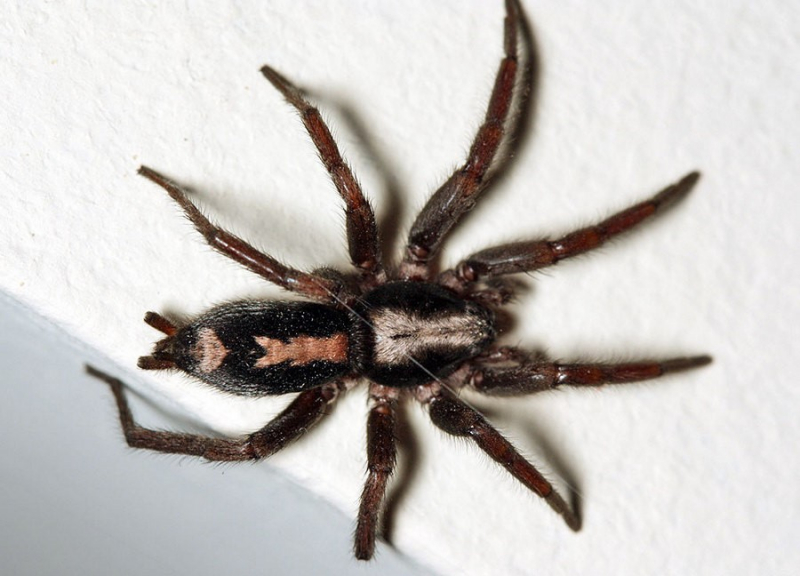
North American Insects & Spiders 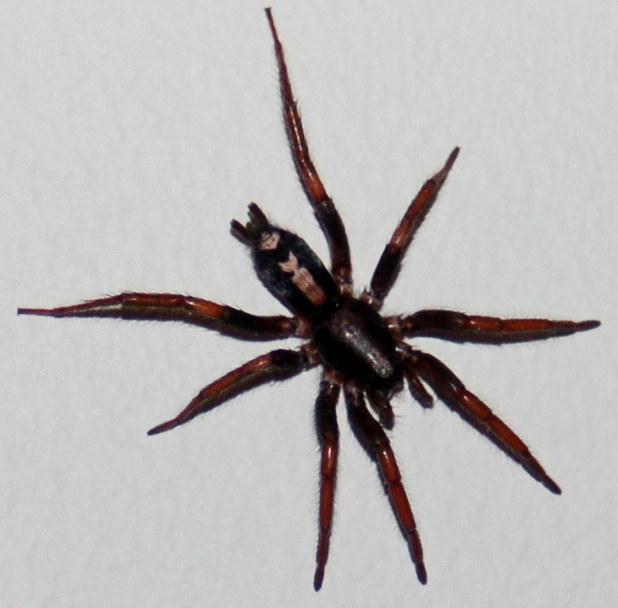
Wikipedia












